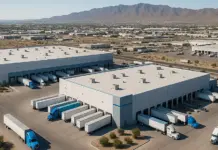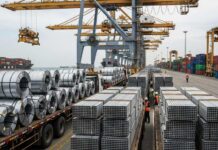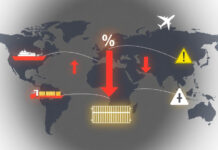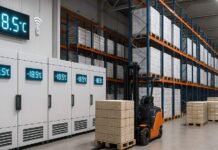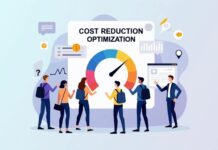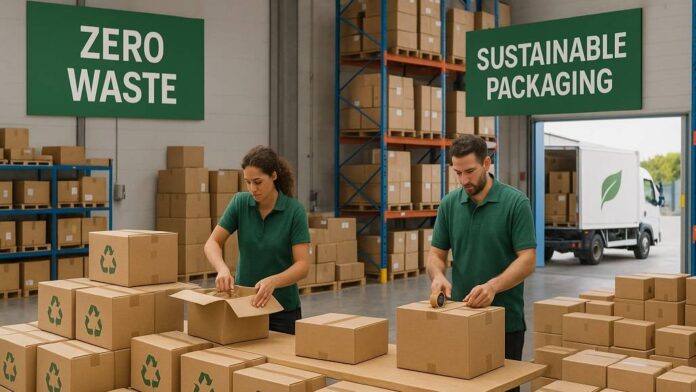The growing need for sustainable practices globally has made businesses reform their operational frameworks to align with environmental objectives. One of the most significant changes that has brought a huge transformation in the past few years has been the implementation of eco-packaging. While sustainability is universally perceived as a moral imperative, eco-packaging has already delivered quantifiable financial returns, particularly in logistics. The eco-packaging return on investment (ROI) is becoming more apparent, as it is a benefit that companies feel through lower costs in addition to more sustainable operations. The dual advantage of cost-effectiveness and environmental conservation has made eco-packaging not only an ethical option but also a business strategy choice.
The eco-packaging in the logistics industry, being the backbone of international business, is well-placed to take advantage of eco-packaging solutions. With the incorporation of sustainable material inputs, creative design strategies, and sophisticated technologies, companies are reconfiguring their supply chains to obtain slimmer operations, lower costs, and quantifiable environmental contributions.
Eco-Packaging: A Paradigm Shift in Logistics
Eco-packaging is the practice of utilizing sustainable, biodegradable, or recyclable materials in the manufacture and creation of packaging. This movement away from conventional packaging materials like plastic towards eco-friendly alternatives is fueled by increasing environmental concerns, regulatory pressures, and changing consumer tastes.
The logistics sector, with its immense transit of materials and products, has traditionally been the biggest generator of packaging waste. A transition to eco-packaging tackles this problem head-on by curbing waste buildup and confining the environmental impact of logistics operations. Aside from its green benefits, eco-packaging also yields real operational gains. From lowering the weight of shipments to cut down on transport expenses to rationalising package size to maximise freight efficiency, eco-packaging has been a valuable investment.
ROI of Eco-Packaging
The ROI of eco-packaging is diversified, in that it involves both direct and indirect economic gains. At face value, eco-packaging saves money through reduced material consumption costs, waste disposal costs, and transport costs. But its influence runs deeper into brand image, customer loyalty, and long-term sustainability.
One of the key drivers of ROI in eco-packaging is material efficiency. Green packaging designs are centred on minimal material use without compromising product safety and durability. With lighter and thinner materials, businesses can save on procurement costs and maximise space utilisation when being shipped. This directly reduces freight costs and maximises the overall efficiency of supply chain operations.
Also, eco-packaging is in line with consumers’ increasing demand for sustainable products. Firms that pursue eco-packaging tend to see improved customer loyalty and brand equity, as contemporary consumers are inclined to favour companies that are environmentally conscious. This intangible value adds to long-term profitability by building stronger customer relationships and better market positioning.
Table: Key Components of Eco-Packaging ROI
| Component | Benefits |
| Material Efficiency | Reduces procurement costs and enhances durability with minimal material use. |
| Transportation Savings | Decreases freight costs with lighter and optimized packaging designs. |
| Waste Management | Lowers disposal costs and reduces environmental compliance liabilities. |
| Brand Enhancement | Strengthens customer loyalty and market differentiation through sustainability. |
| Operational Optimization | Maximizes space utilization and improves warehouse efficiency. |
Eco-Packaging in Action: Operational and Cost Benefits
The implementation of eco-packaging has real-world ramifications throughout the value chain in logistics. By solving key operational functions including transportation, warehousing, and waste management, eco-packaging provides aggregated cost advantages and improvements in efficiency.
One of the most tangible operational advantages of eco-packaging is the fact that it tends to decrease shipment weights. Standard packaging, typically produced with heavy plastics or composites, has a tendency to contribute significant weight to shipments. Eco-packaging substitutes like corrugated cardboard, biodegradable plastics, or compostable materials greatly cut down on weight, causing lower fuel usage and transportation expenses. For businesses operating on a large scale, saving even small amounts of weight creates significant returns on investment over time.
Eco-packaging also helps use space efficiently whether in warehouses, vehicles, or even conveyances. Sustainable packaging typically have a compact packaging design idea to generate more product density in terms of storage and transportation. This not only lowers handling expenses but also optimizes the use of available space, allowing companies to move more products with less travel. The outcome is a more efficient and streamlined logistics operation.
Waste reduction is also a key benefit of eco-packaging. Conventional packaging tends to generate the wasted material for creation, as well as the disposed material for usage. Eco-packaging mitigates this aspect through the material specification that embraces recyclable, compostable, or biodegradable material, so that waste disposal becomes less expensive so that it can meet the regulations to reduce total waste. The use of environmentally friendly materials also acts as a preventive cost source from an environmental fine perspective in cost mitigation.
Today, sustainability is not just an important consideration for business anymore – it is a value driver. Companies that implement eco-packaging initiatives as part of their supply chain functions not only create efficiencies and savings for themselves, but they contribute to the bigger picture of the environment beyond just their business. It is this alignment with sustainability that drives a positive feedback loop whereby the economic savings are used to invest into the additional sustainability initiatives.
For example, companies that operate blanket eco-packaging principles, manifest the savings into renewable energy projects, energy-efficient equipment associated with packaging, carbon, and offset-program. Such ongoing investment in sustainability strengthens the reputation of the company and generates additional cost savings. Further, companies implementing eco-packaging are better positioned to satisfy increasingly high regulatory, investor, and consumer demands for sustainable practices.
Challenges and Solutions in Implementing Eco-Packaging
Although it has its benefits, the shift towards eco-packaging is not without its challenges. One of the main challenges is the assumed cost of implementing sustainable materials. Most companies do not readily abandon customary packaging because of fears of increased initial expenses. This perception tends to ignore the long-term cost savings and operating advantages of eco-packaging.
To overcome this challenge, companies can take a phased implementation approach, beginning with pilot schemes or individual product lines. This enables companies to assess the viability and ROI of eco-packaging before rolling it out across their operations. Furthermore, collaborations with suppliers that specialise in sustainability can enable companies to benefit from low-cost eco-packaging solutions that are adapted to suit their requirements.
Another hindrance is assuring the functional performance of eco-packaging, which includes product durability and product protection. One way to work around this is for companies to invest in innovation in materials and design technologies that will enhance the function of the eco-packaging. Companies may also commit to collaborating with research universities or packaging experts, which can accelerate the learning and processes necessary to develop high-quality sustainable solutions.
Future Trends in Eco-Packaging
The future of environmentally friendly packaging is marked by ongoing innovation and convergence with cutting-edge technologies. Emerging trends involve the application of smart packaging, which features IoT sensors that track product conditions while in transit. Such sensors not only increase product safety but also offer useful data to optimize supply chain operations.
Another encouraging trend is the creation of bio-based packaging materials sourced from renewable resources. These materials are more sustainable and biodegradable, decreasing the environmental footprint of packaging. As research and development remain in progress, bio-based materials should also become more cost-competitive, thus propelling their use even further.
Also, governments and industry associations will come out with stricter regulations and incentives for encouraging sustainable packaging. Companies that embrace eco-packaging ahead of time will be in a better position to meet these requirements and benefit from the opportunity generated by the emerging green economy.
Conclusion
The eco-packaging in logistics is a compelling intersection of ecological sustainability and economic effectiveness. With sustainable materials and creative designs, logistics companies can deliver quantifiable ROI while supporting planetary environmental objectives.
The advantages of eco-packaging spread throughout the entire value chain, from lowering transportation and waste handling expenses to boosting customer loyalty and brand image. While there are challenges, they can be defused with carefully laid plans, creativity, and mutual collaboration.
As sustainability becomes ever more important, green packaging will be at the forefront of changing the future of logistics. Those firms who adopt the change can reap the benefits of not only slimmer expense lines but also long-term value and strength through greener processes.



